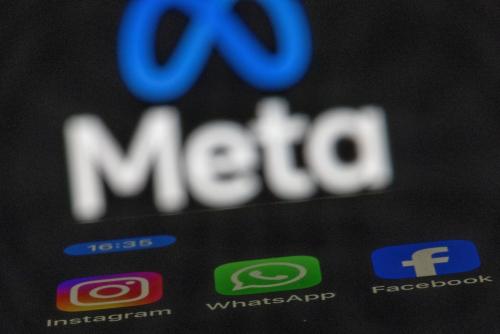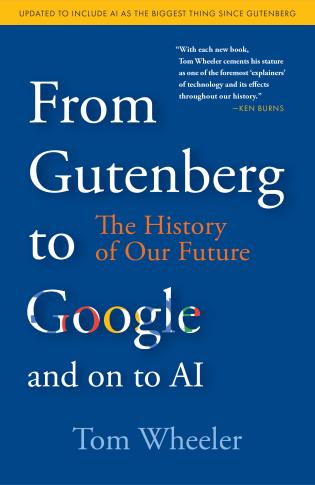New TechTank Blog Posts Are Available Here
Chances are that you’ve heard of bitcoin, the digital currency that many predict will revolutionize payments – or prove to be a massive fraud – depending on what you read. Bitcoin is an application that runs on the Blockchain, which is ultimately a more interesting and profound innovation.
The Blockchain is a secure transaction ledger database that is shared by all parties participating in an established, distributed network of computers. It records and stores every transaction that occurs in the network, essentially eliminating the need for “trusted” third parties such as payment processors. Blockchain proponents often describe the innovation as a “transfer of trust in a trustless world,” referring to the fact that the entities participating in a transaction are not necessarily known to each other yet they exchange value with surety and no third-party validation. For this reason, the Blockchain is a potential game changer.
In 2008, Satoshi Nakamoto, the pseudonymous person or group of people credited with developing bitcoin, released a whitepaper describing the software protocol. Since then, the network has grown and bitcoin
has become a recognized unit of value around the globe. Bitcoin is extremely important because it provides a mechanism for accessing the Blockchain – but it’s not the only application that can leverage the platform.
Bitcoin has also been on the receiving end of some bad press, such as around the collapse of the Mt. Gox bitcoin exchange earlier last year. The Mt. Gox story is not necessarily an indictment of bitcoin. For the purposes of this post, simply remember this: bitcoin is just a mechanism for transacting on the Blockchain and the Blockchain is the key innovation.
The Blockchain: Trustworthy Transactions in a Trustless World
The Blockchain enables the anonymous exchange of digital assets, such as bitcoin, but it is not technically dependent on bitcoin. The elegance of the Blockchain is that it obviates the need for a central authority to verify trust and the transfer of value. It transfers power and control from large entities to the many, enabling safe, fast, cheaper transactions despite the fact that we may not know the entities we are dealing with.
The mechanics of the Blockchain are novel and highly disruptive. As people transact in a Blockchain ecosystem, a public record of all transactions is automatically created. Computers verify each transaction with sophisticated algorithms to confirm the transfer of value and create a historical ledger of all activity. The computers that form the network that are processing the transactions are located throughout the world and importantly are not owned or controlled by any single entity. The process is real-time, and much more secure than relying on a central authority to verify a transaction.
There are many analogous concepts both ancient and modern. Technology has and will continue to transfer power and control from central authorities and distribute them to the masses. For example, time used to be determined and communicated by large clock towers that were expensive to build and maintain. Engineering innovations ultimately decentralized the quantification of time to the individual. Likewise, WhatsApp, a popular cross platform messaging app, cut the transaction cost of sending messages globally – and cut profits for the carriers. The central authority (phone carriers) lost to the application (WhatsApp) built on a decentralized network (i.e. the Internet).
Similarly, third parties that currently verify transactions (the central authority) stand to lose against the Blockchain (the decentralized network). As such, the Blockchain essentially disintermediates these third-party transaction verifiers: auditors, legal services, payment processors, brokerages and other similar organizations.
While you may not be convinced that exchanging bitcoin is an invaluable service, there are many other examples of value transfer that are critical – and currently very slow and expensive. Consider the exchange of property: numerous intermediaries are currently involved in this process, such as a third-party escrow service that works for both parties to ensure a smooth transfer. The escrow service, like other services built solely on trust and verification, collect fees that would be mitigated by performing the transaction on the Blockchain – as would wire transfer fees, third party financial auditing, contract execution, etc.
The use case of the Blockchain enabling a decentralized currency exchange – such as bitcoin – is well defined and will likely be the dominant use case near term, however there are a multitude of innovative and disruptive use cases. Companies are already building their own Blockchains for various applications such as Gridcoin that leverages the Blockchain to crowdsource scientific computing projects. Gridcoin uses its own protocols that require much less computing power and electricity to manage than traditional bitcoin networks.
The Blockchain: and Why it Matters (Let’s Not Mess it Up)
The Blockchain is a foundational technology, like TCP/IP, which enables the Internet. And much like the Internet in the late 1990s, we don’t know exactly how the Blockchain will evolve, but evolve it will.
Similar to the Internet, the Blockchain must also be allowed to grow unencumbered. This will require careful handling that recognizes the difference between the platform and the applications that run on it. TCP/IP empowers numerous financial applications that are regulated, but TCP/IP is not regulated as a financial instrument. The Blockchain should receive similar consideration. While the predominant use case for the Blockchain today is bitcoin currency exchange that may require regulation, this will change over time.
Had we over-regulated the Internet early on, we would have missed out on many innovations that we can’t imagine living without today. The same is true for the Blockchain. Disruptive technologies rarely fit neatly into existing regulatory considerations, but rigid regulatory frameworks have repeatedly stifled innovation. It’s likely that innovations in the Blockchain will outpace policy, let’s not slow it down.
New TechTank Blog Posts Are Available Here



Commentary
The Blockchain: What It Is and Why It Matters
January 13, 2015